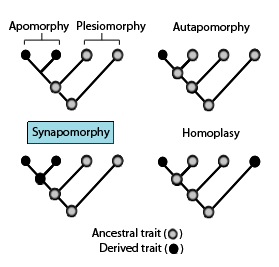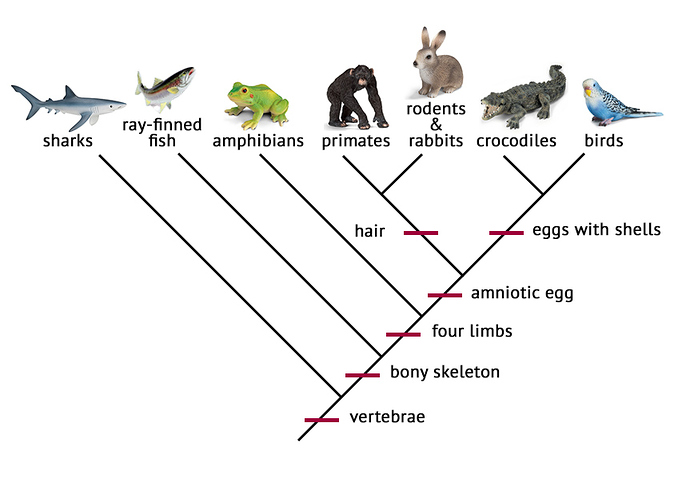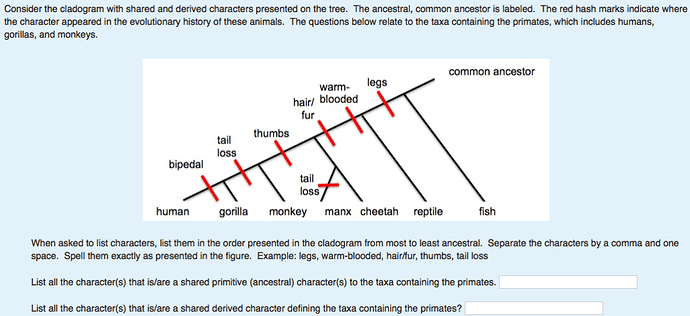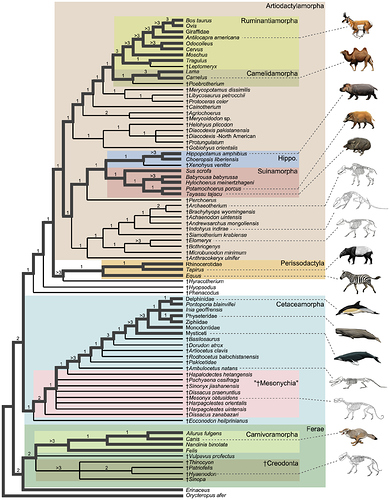Have you ever wondered about the phrase "missing link"? This is the first
article I've read that does a good job of explaining the misunderstanding regarding
"missing link" fossils ... versus, say, "transitional forms". But even that phrase
causes problems - - because it implies that one population of extinct animal
"transitioned" into this other fossil form! Sometimes that slightly different
fossil comes from a different lineage, but shows perfectly what the common
ancestor or eventual descendant could have looked like!
“Not that “transitional form” is without its own problems. The phrase can sometimes inadvertently cast an evolutionary cousin as an ancestor through popular translation. But it at least highlights that the organism in question helps inform what paleontologists have identified as a major shift in life’s history.”
Some scientists are moving towards “Intermediate Form” which has fewer implications that one creature led directly to another. Sometimes it is years before experts know enough to know whether a new fossil is on a direct lineage (ancestor or descendant) - - or actually belongs to a related lineage, but demonstrates what a plausible Intermediate Form would look like between one known fossil and another!
How many times have you read “Life is really a tree, not a chain.” Haven’t you ever wondered ‘what difference does it make’?!
Well, here it is!:
“To me, the idea of a ‘missing link’ implies a linear chain of one species evolving into another, evolving into another, and so on,” says Smithsonian Human Origins Program anthropologist Briana Pobiner. That isn’t the pattern we see [in the random fossils we find]. Instead. . . :
Evolution “produces a tree-like branching pattern with multiple descendants of an ancestor species existing at the same time, and sometimes even alongside that ancestor species.”
“Paleontologists often prefer the term . . . “Intermediate Form,” because [it] impl[ies] … these species are parts of an ever-changing continuum. This isn’t just a matter of splitting hairs; terminology shapes our ideas and the way dramatic changes in the course of life are interpreted. Before (and even after) Darwin, naturalists sometimes saw species as part of a ranked hierarchy in which newer forms were somehow better than what came before. “Sloppy words lead to sloppy thinking,” as Pyenson says.”
“In some sense, every species i[s] a[n] [Intermediate] Form from its ancestor because it retains many ancestral traits but has enough unique traits to be a separate species,” Pobiner says."
"And given that every species alive today has fossils related to its ancestry, that’s a lot of [Intermediate] fossils. More often, Pobiner says, “paleontologists often use this term when talking about larger anatomical or ecological shifts that occurred during the history of life.”
For the sake of avoiding confusion in the public mind - - don’t think “missing link”, and try to avoid “transitional forms” - - and focus on “Intermediate Fossils”. While it is rare to know for sure that one fossilized life form literally represents an earlier or later population of Transition - - all similar fossils are Intermediate!
**[Note on Edits - - to better drive the point home, some sentences quoted from the article were edited to more consistently use the terminology of Intermediate Forms and Fossils.]






